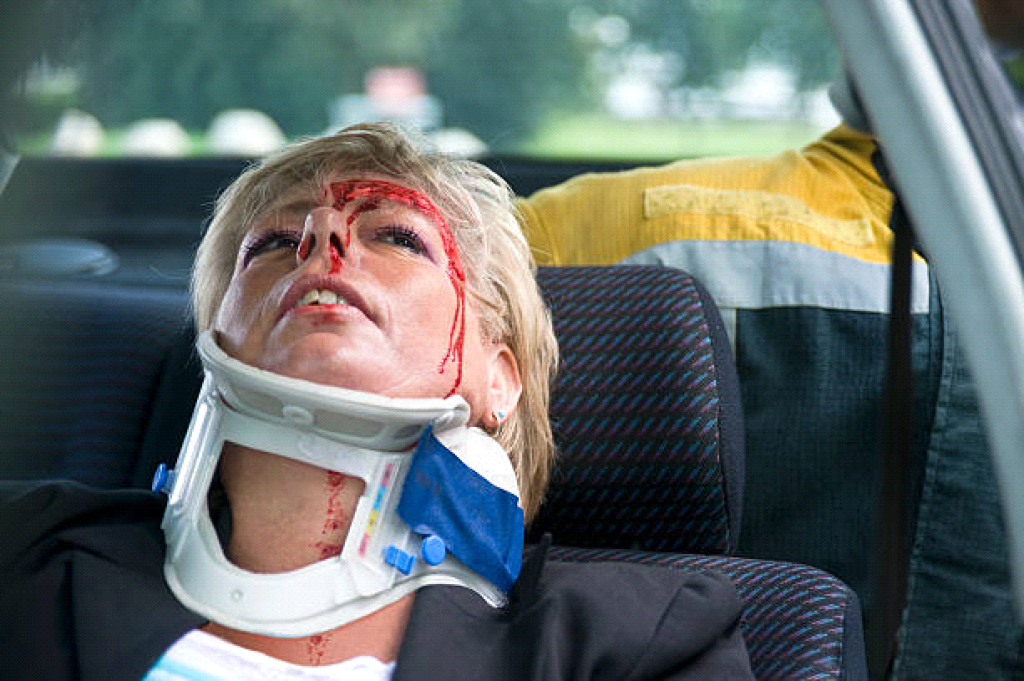Car crashes are shocking, even when they seem minor. You might get out of your car, check for visible damage, and feel grateful that nothing seems broken on your body or your vehicle. But here’s the thing most people don’t talk about: not all injuries show up right away. In fact, some post-crash injuries stay hidden for hours, days, or even weeks. You might feel totally fine at the scene, only to wake up the next morning with pain in your neck, back, or head. And by then, it can be harder to connect those symptoms back to the crash. That’s why understanding hidden injuries after a car crash is so important.
In this article, we’re going to walk through the most common hidden injuries, why they take time to show up, and what to do if you suspect something’s wrong. If you’ve recently been in a collision—even a low-speed one—this guide is for you.
Why Do Some Injuries Stay Hidden After a Crash?
Right after an accident, your body goes into survival mode. Adrenaline surges, your heart races, and your focus is on what just happened. That adrenaline can actually mask pain and other symptoms, tricking you into thinking you’re okay.
Once that adrenaline wears off (which can take hours), your body starts telling the truth.
Also, some injuries involve soft tissue damage, swelling, or even internal trauma that just doesn’t reveal itself instantly. That’s why people often report feeling “worse the next day.”
Common Post-Crash Injuries That Are Easy to Miss
Let’s break down a few injuries that often don’t show immediate symptoms but can cause serious trouble if ignored.
1. Whiplash
This is one of the most common hidden injuries. Whiplash happens when your head is suddenly jerked forward and backward—like during a rear-end collision. It can lead to neck pain, stiffness, headaches, and even dizziness. But these symptoms might not appear until 24-72 hours after the crash.
2. Concussions
Not all head injuries come with a visible bump or open wound. If your brain is jostled during the crash, even without hitting your head, you could suffer a concussion. Symptoms include confusion, fatigue, memory problems, sensitivity to light, and even mood changes. These signs can be subtle and delayed.
3. Back Injuries
The impact of a crash can compress your spine or strain your back muscles without breaking bones. You might walk away pain-free, only to feel sharp pain or numbness in the lower back or legs a few days later.
4. Internal Bleeding
This is one of the scariest hidden injuries because there are no external signs. But if you feel faint, dizzy, or notice unusual bruising or swelling, it could be internal bleeding—something that requires immediate medical attention.
5. Soft Tissue Injuries
Your muscles, tendons, and ligaments can all be damaged in a crash, leading to sprains or strains. These might not be obvious right away but can lead to long-term discomfort or limited mobility if untreated.
What to Do If You Suspect Hidden Injuries
1. Listen to Your Body
If something doesn’t feel right—no matter how small—don’t ignore it. Pain, stiffness, headaches, or numbness are all signs that your body is asking for help.
2. Get a Medical Evaluation
Even if you feel “okay,” it’s a smart idea to get checked out by a doctor soon after the crash. They can help catch issues you might not notice yourself. Imaging tests like X-rays, MRIs, or CT scans can reveal injuries beneath the surface.
3. Document Everything
Keep track of your symptoms, no matter how minor. When did the pain start? Where does it hurt? Has anything changed since the crash? This documentation can be valuable if you need to explain your condition later—whether to your doctor or in a legal situation.
4. Follow Through With Treatment
It’s tempting to skip physical therapy sessions or stop taking it easy once you feel better, but healing from post-crash injuries takes time. Sticking with your recovery plan can make the difference between temporary pain and a long-term problem.
Real Talk: Even “Minor” Crashes Can Cause Hidden Injuries
There’s a myth that low-speed or “fender bender” crashes don’t cause real harm. That’s just not true.
Even at slow speeds, your body absorbs impact forces it’s not built to handle. Your neck can still whip forward. Your lower back can still twist. And your brain can still take a hit.
So if someone tells you that you’re overreacting because the crash wasn’t “bad,” don’t buy it. You know your body better than anyone.
How Long After a Crash Can Symptoms Appear?
It varies from person to person, but most hidden injuries reveal themselves within a few days. Some symptoms, especially related to nerve damage or chronic soft tissue injuries, can take weeks to become noticeable.
The sooner you catch it, the better. Delaying treatment can make the injury worse or slow your recovery.
Can You Prevent Hidden Injuries?
While you can’t always prevent them entirely, you can reduce their impact by acting quickly. That means:
- Getting medical help even if you feel fine
- Avoiding strenuous activity after the crash
- Paying attention to your body in the days that follow
- Taking all symptoms seriously
FAQs About Post-Crash Injuries
1. Can I feel fine right after the crash and still be injured?
Yes. That’s very common. Adrenaline can mask pain, and some injuries take time to show up. If you were in a crash, pay attention to any changes in your body over the next few days.
2. How long do I have to see a doctor after a crash?
Ideally, you should get checked out within 72 hours. That’s when most symptoms start to appear. But even if it’s been longer, it’s never too late to seek medical attention.
3. What are signs of a concussion I should look for?
Look out for headaches, dizziness, confusion, memory issues, nausea, or changes in mood or sleep. These could appear hours or even days after the crash.
4. Is whiplash dangerous?
While not usually life-threatening, untreated whiplash can lead to chronic pain, limited mobility, and even long-term neurological issues. It’s definitely something you don’t want to ignore.
5. Should I rest or stay active after a crash?
Early rest is important, especially if you have muscle or joint pain. However, always follow your doctor’s guidance. In some cases, light movement or physical therapy can help the healing process.
Conclusion: Don’t Let Hidden Injuries Catch You Off Guard
Crashes are stressful, and it’s easy to brush off your pain in the moment. But hidden post-crash injuries are real, and they can seriously affect your quality of life if not addressed early. Whether it’s whiplash, a concussion, or something deeper, staying aware and acting quickly can protect your health in the long run. Never assume that “feeling fine” means you’re in the clear. Be kind to your body. Pay attention to the signs. And most importantly, don’t wait to get help. It’s always better to check and be sure than to suffer silently later.

